Seattle is currently in a 2-week string of low pressure fronts bringing rain and gale force winds. While waiting out these storms is tough, we did the Elliott Bay Rum Run today with the sun out (for the first time in quite a while), and a couple weeks ago got in an overnight cruise to Eagle Harbor on Bainbridge Island.
We’ve been finding one nice thing about off-season cruising – there’s wind! We sailed from the marina breakwater into Eagle Harbor right up to the ferry dock area. The next day we sailed off anchor in a 2 knot breeze and slowly jibed our way out of the harbor, with a few tricky wind shifts and several course changes due to shallow areas and buoys.
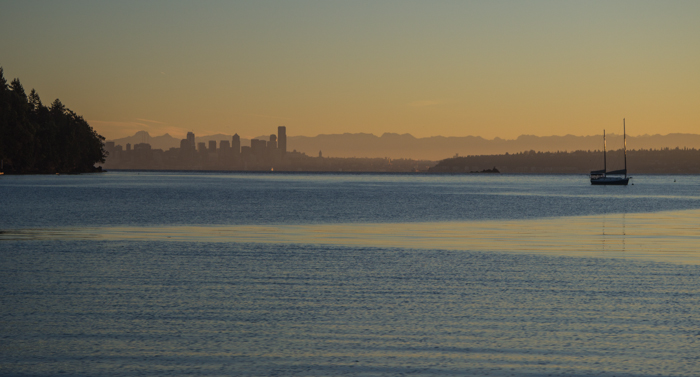
As we rounded the Eagle Harbor buoy and headed up onto a port close haul, the wind picked up to a perfect 8-12 knots. As we crossed the Sound though, the wind built – until south of the Discovery Park area the seas were kicking up white caps on top of 2-3 foot waves. Our boat under full sail beating upwind was heeling the rail into the water with almost a half turn of weather helm. Gusts were making the wheel hard to control and rounding us up.
The traveler was all the way to leeward and we were luffing the main, dumping most of the power from it. What happened to our 8-12 knot winds??? The forecast was for less than 5 knots in the morning, dropping to no wind in the afternoon. It was the afternoon now (right around 12pm) and I said to Natalie “this feels like about 20-25 knots.” (a later reading of the West Point NOAA station confirmed it was 22 gusting to 23).
The high winds died down as quickly as they had appeared – in 20 minutes they were back down to 10-15. But it had been an unexpected surprise that we were somewhat unprepared for.
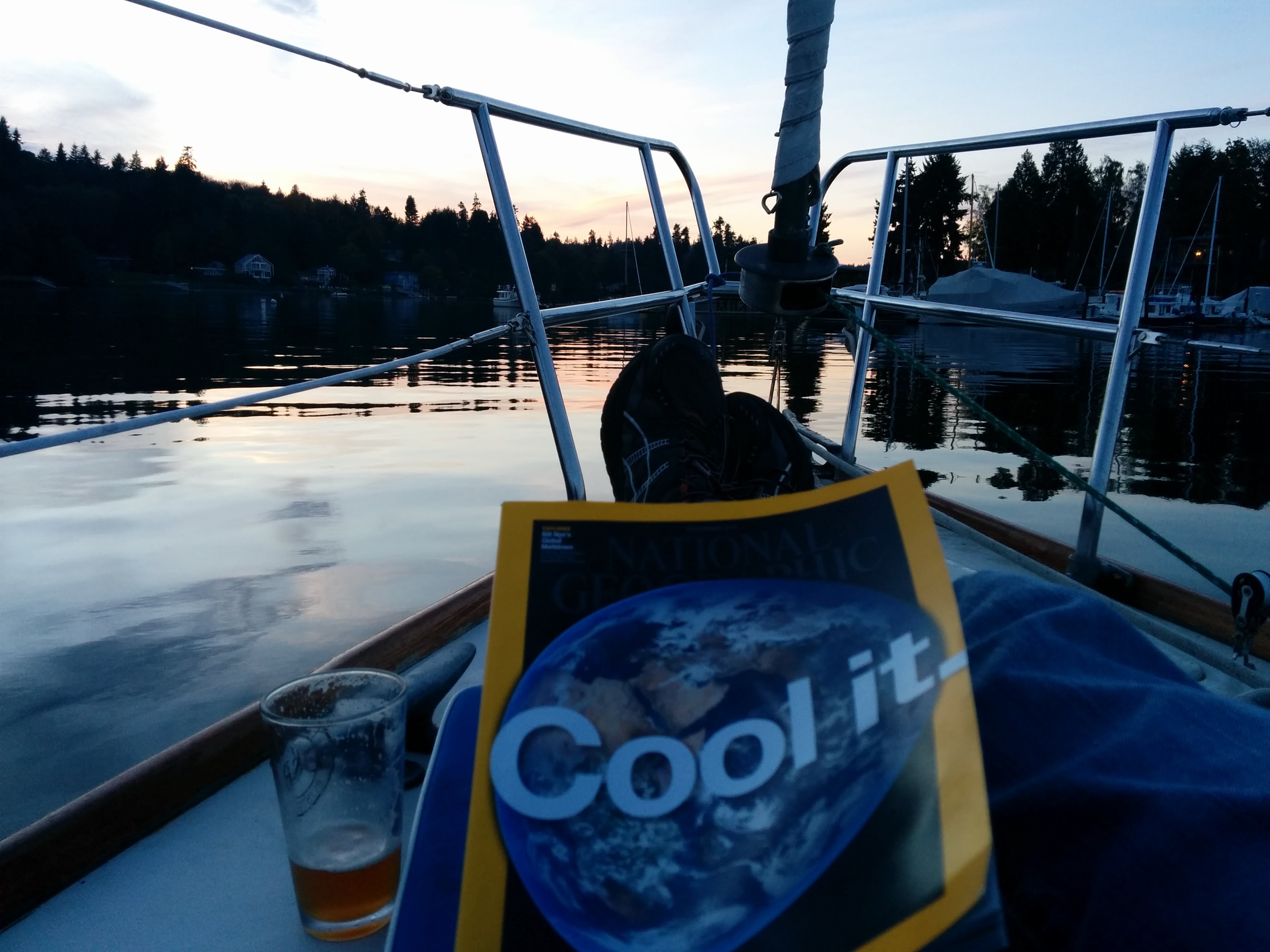
A nice fall evening in Eagle Harbor reading National Geographic.
Marine Wind Forecasts in the Winter – More of a Guessing Game
I study the NOAA reports a lot. Even if I’m not sailing I’ll typically check the marine point forecast almost daily and then compare that to the actual wind readings of the West Point station to see what really happened.
I’ve noticed an interesting change as summer transitioned to fall:
In the summer the forecasted wind range is usually a *maximum*. In the fall the wind forecast is more of an average.
I don’t think NOAA intentionally changes their forecast metrics, I think it’s just a consequence of more variable wind levels and bigger wind ranges over the course of a day in the winter. But it makes a big difference in how a sailor should interpret the forecast. In the summer a forecast of 8-12 kts N usually means you can expect light winds in the morning (zero to 5 perhaps), 8-12kts in the afternoon (consistent if you’re lucky, variable if not) and then zero to 8 kts in the evening (after about 6pm).
In the fall I’ve found a forecast of 12 kts N might mean you get 8-12 kts in the morning, 12 – 18 kts in the afternoon, and then 8-12 kts in the evening. So the 12 kt forecast was more of an average than a max – while in the summer it was fairly rare to get winds substantially higher than the forecast. And going out expecting 12 kts but getting 18 can be a fairly big surprise – 18 kts is when most cruisers start to think about reefing. On windier days, the error magnitude can be even larger – a forecast of 20 kts might have 30 kts for an hour out of the day.
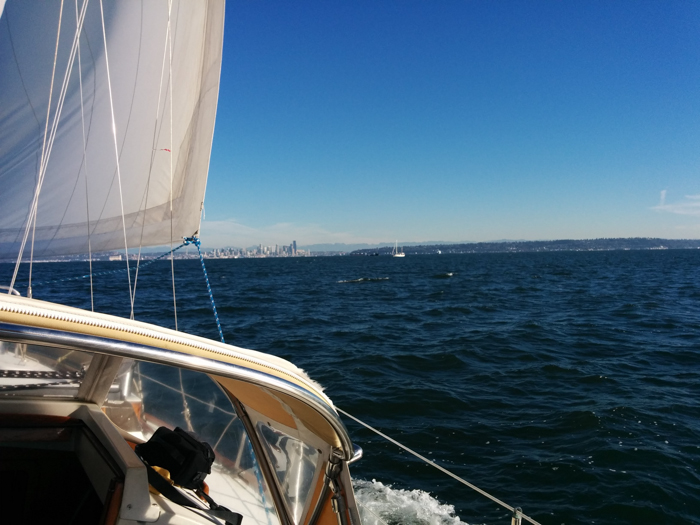
PNW Fall-Winter Weather Pattern
I’m not a weather expert, but the fall-winter-early spring pattern in the Pacific Northwest in layman’s terms is easy to describe. It consists of strong low pressure zones blowing in from the south, for multiple days at a time, followed by typical high pressure driven winds from the north. In the summer we mostly just have one big long high pressure zone.
A southerly front usually brings rain and high winds. The reason people worry about southerlies more than northerlies is that south winds are more likely to get into very high ranges – like 25 to 40 knots (even the occasional 50+ knot storm!). North winds can be strong too in the winter, but more typically stay in the 10 – 25 knots range (note this is still well higher than typical summertime north winds).
The changeover from south winds to north can happen quickly, and sometimes multiple times in one week. When south winds are changing to north you’ll usually see rising barometric pressures and a brief period of no wind. In the perfect cruise you could time this switchover – use south winds to drive you north up Puget Sound, and use north winds for your return south. Of course, predicting the switchover point isn’t easy, but sometimes the NOAA forecasts give clues (look for the day they’re saying high pressure will come in).
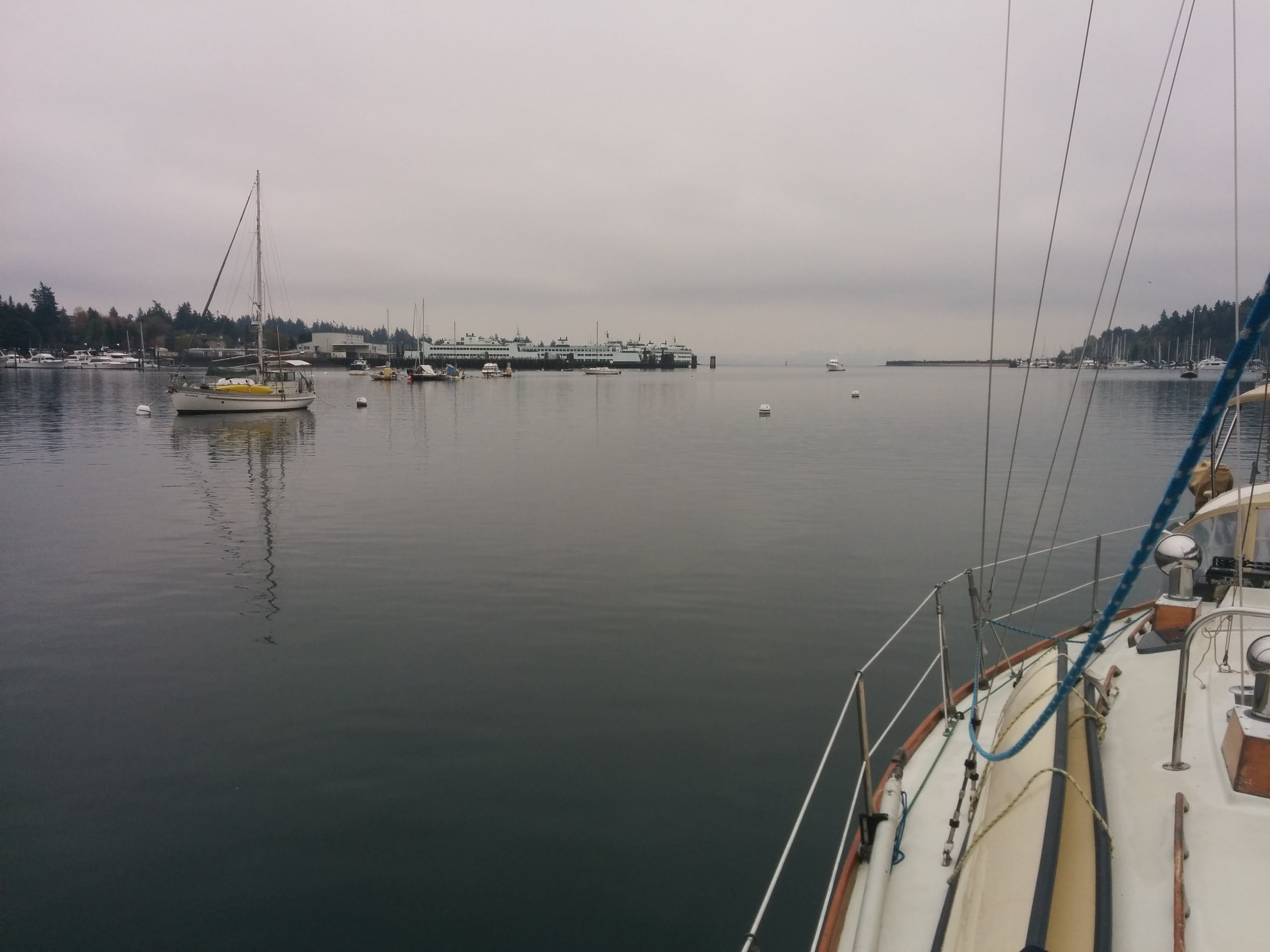
Plenty of room to anchor in Eagle Harbor.
Empty Anchorages
This is the part of off-season cruising everyone talks about, so you’ve probably already heard it, but it’s true – not many people sail in the off-season so it’s easy to find a spot in anchorages that would be crowded in the summer.
In our Saturday night stay at Eagle Harbor in October, we saw no other boats anchored out, other than a couple long-term moored ones which had no one on them.
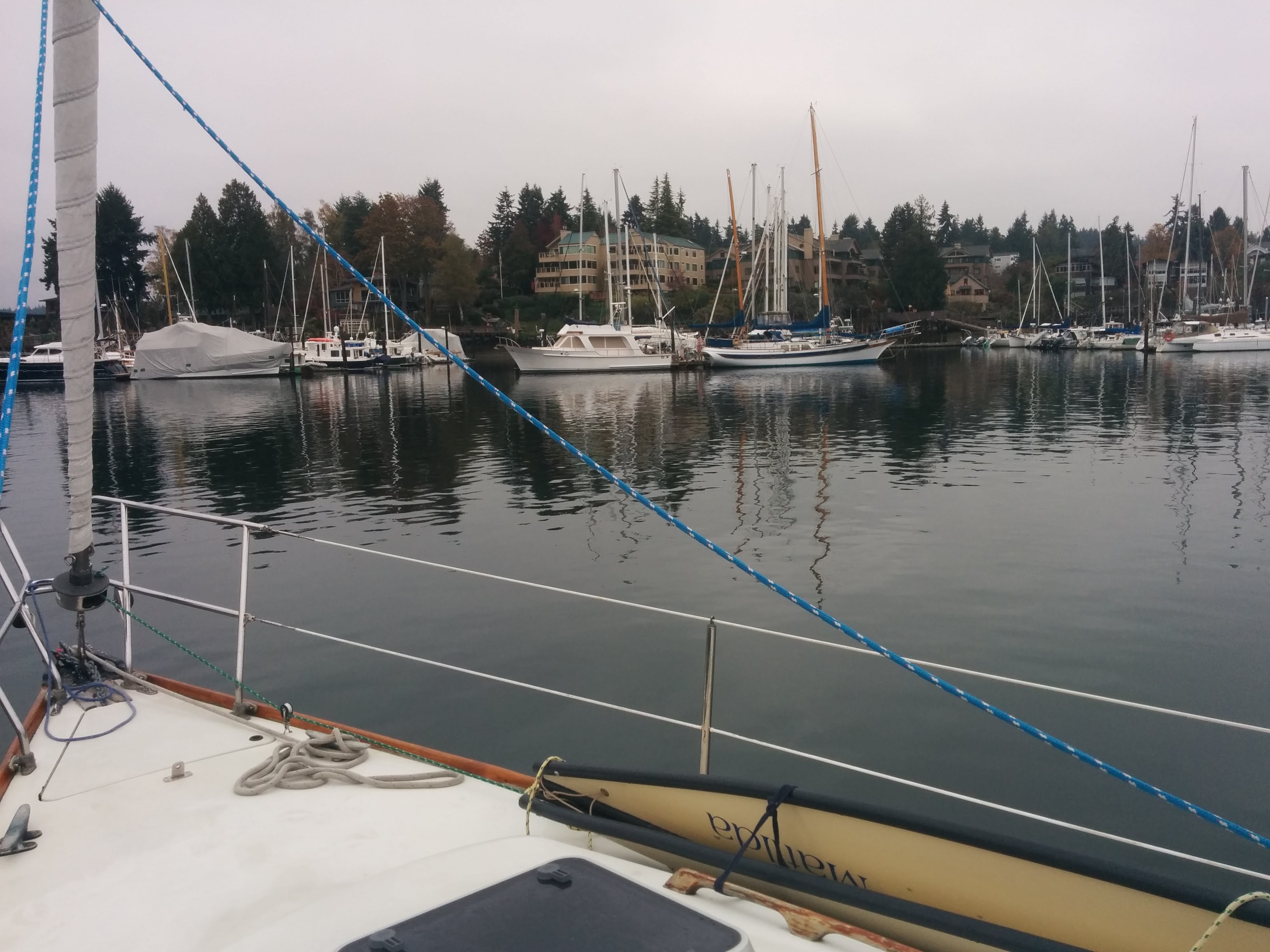
Great Wind for Sailing
While the above bit about empty anchorages was anticipated, one aspect of off-season sailing I didn’t realize was – the wind is wonderfully consistent in being enough to sail with. As you know one of the things I hate is motoring. In the summer we often can get an entire day with no wind above 5 knots, or even 3-4 days in a row with no wind. In the fall/winter this seems to be relatively rare – some days the wind might be less than 5 for a few hours but suddenly a nice 8 knot wind will spring up for a couple hours.
It’s gotten to the point where I’m looking for an excuse to run our diesel engine at load (diesels like to be run at more than idle speeds at least some of the time). The last few times we’ve been out, we’ve used the engine only for a few minutes to get in/out of the marina or an anchorage.
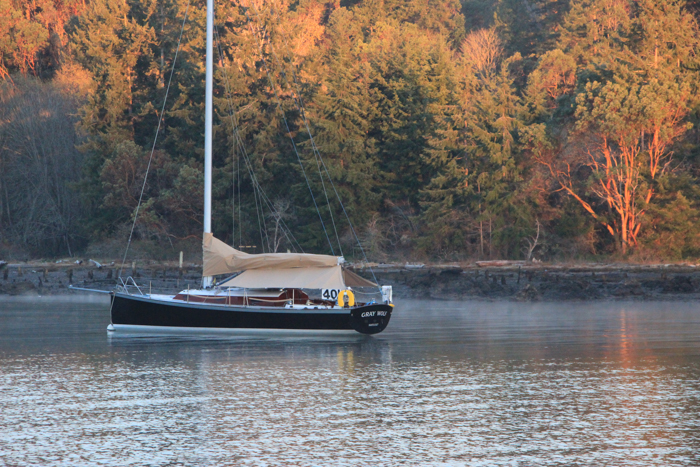
Blakely Harbor
